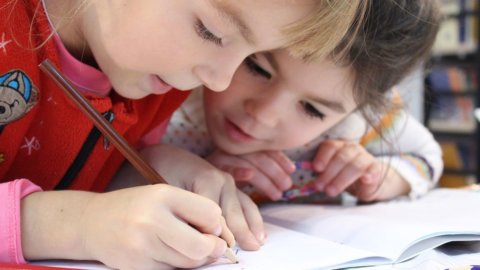In a country that is in the penultimate place among those of the G20 in terms of financial education of the population, with percentages well below the European average – only 37% of the population knows the basic concepts of economics and finance, against 71% in Norway, Sweden and Denmark – teaching children the value of money and savings becomes essential for their future. Small "lessons" offered in the form of a game which from an early age can help create an aware citizenry in terms of financial education.
In order to help parents, teachers and educators to make children understand the value of money, teaching them the difference between what is superfluous and what is necessary, the FEduF, Foundation for Financial Education and Savings set up by ABI has compiled a collection of good practices for useful advice to apply to start directing children towards an important subject such as financial education.
Here are seven practical tips:
To teach how to spend money wisely and to think about what you need and what you want, you need to make children protagonists: let them prepare their shopping list asking them to list what they need. Then, at the checkout, compare the list with what they have put in the cart. We bet you will find many intruders
To teach the concept of savings, you can make him imagine that the aisles of the supermarket are many colored streets where he can go looking for the cheapest products. Teach them to read labels and compare prices and explain that by being careful you can buy the things you need while saving a little money. And while they learn the concept of savings, you can help them reflect on the relationship between quality and price.
To help them understand pricing and introduce some math, ask them to choose the fruit for you by selecting the cheapest products. However, explain to him that the cheapest things are not always the best and introduce the concepts of quality (is it fresh or preserved? Is it too unripe or too ripe?), of origin (is it locally produced or does it come from far away?), of seasonality ( strawberries in January maybe it's better not to buy them).
To educate children to avoid waste, both economically and environmentally, ask them to choose bulk products, those at zero kilometer or with little packaging (e.g. refillable detergents). Thus, in addition to buying only the quantity of product that is really necessary, we will also save the environment by reducing CO2 emissions for transport and the costs of disposing of the packaging.
To teach them to be sustainable also in their diet, buy seasonal fruit and vegetables to save money and eat properly. You can make the search for the seasonality of food a game, stimulating memory, senses and imagination: “What type of fruit corresponds to which season? Snow White's red apple is eaten in winter, while large, juicy watermelons are eaten in summer”.
To get them used to managing their personal budget, provide them with weekly pocket money identifying together which expenses it must cover. If they behave responsibly and prudently with the amount available, they will have the opportunity to buy something they really care about with the pennies saved from time to time. In this way you will stimulate them to plan to achieve a goal.
To train them to avoid unnecessary spending and be sustainable, ask them to bring a couple of bags from home to put your shopping in, so you won't waste money and you won't accumulate useless bags at home. And you will teach your children that intelligent savings help the family budget and the planet too!
FEduF






to start extraditing (?) children to an important subject…jesus…it's spelled routing!
We apologize for the involuntary distraction and thank you for reporting it: we corrected it immediately